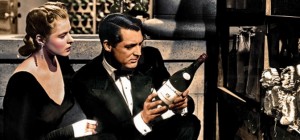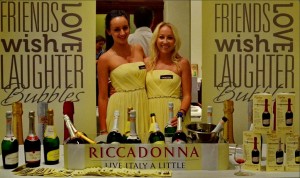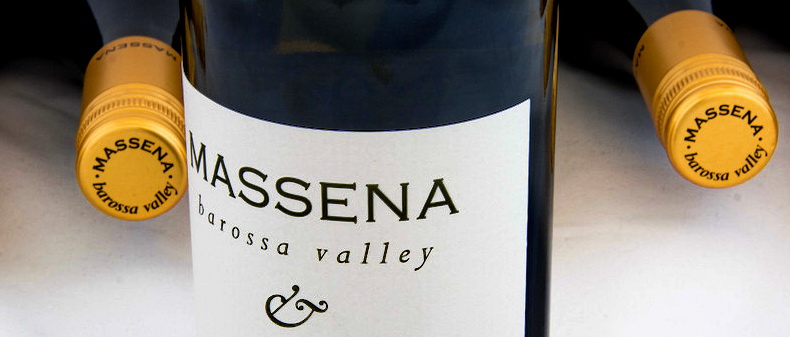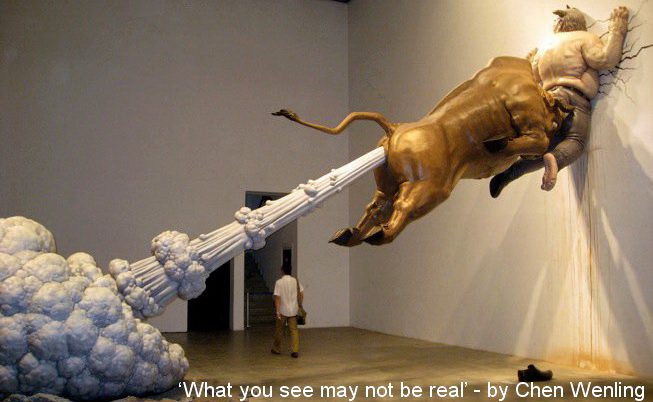Not another 95 point Halliday $20 bargain
I read today’s mailer from Bert Werden at Winestar with interest as I do most Tuesday mornings. I can’t remember a Tuesday when it didn’t start with a 95 point Halliday sub-$20 bargain, but today the mailer was headed 97 Point Tyrrells & Barossa GSM Vs Rhone.
It didn’t begin the usual way either, but with Bert talking about an email from a subscriber who was ‘critical of our wine choices in The WineStar Journal citing that we “always went for high pointed wines”. Tongue in cheek, I asked in reply if he preferred we promoted the low rated, overpriced and those performing poorly at our own tasting.’
 ‘The gentleman clarified that, while he disagreed with high ratings on some wines by some critics, he disagreed with low ratings on others. Indeed I totally agree. For every wine that is overrated, there is another that is underrated but we rarely hear about those …’
‘The gentleman clarified that, while he disagreed with high ratings on some wines by some critics, he disagreed with low ratings on others. Indeed I totally agree. For every wine that is overrated, there is another that is underrated but we rarely hear about those …’
That’s our job: finding great wines you rarely hear about
Bert adds a strange twist before he dives into his usual sales spiel: ‘I could count on one hand the number of times this decade that I have rated a wine higher than mainstream wine commentators.’ I don’t recall ever seeing his ratings in his weekly mailer, but I think he’s saying most of the scores from the other guys are inflated yet he’s happy to use them to flog his grog.
We don’t sell wine. If we did, we’d probably do what Bert does. Andrew Caillard made the point in a recent Gourmet Traveller Wine article – we discuss it in Wine Poetry and Perfect Scores – that tasting notes and scores for wines have become ‘bankable consumer currency.’ Other merchants and wineries use Halliday’s scores (and those of other reviewers) to promote their wines. Why should Bert do anything different?
We’ve probably said enough about Halliday’s inflated scores in James’ top picks in the 2015 Wine Companion. The rest of the guys – Messrs Walsh, Mattinson and Bennie at the Winefront, Huon Hooke and Tyson Stelzer – usually come up with more reliable scores some 3-5 points lower than Halliday’s.
Our ratings aren’t bankable currency
And we’re happy with that. Best Wines is a tiny island in the ocean of the wine business. we’re not on anyone’s radar so we can say outrageous things without people suing us. I have no conflicts of interest. I sometimes wonder what happens when Campbell Mattinson writes reviews for Halliday’s wine companion. Does he inflate his scores to Halliday’s level, and deflate them when he has his Winefront hat on?
 Campbell is also the editor of The Wine Companion magazine, that glossy collection of stories, advertorials and infomercials. ‘I like things to be clear,’ I wrote in The Flawless World of James Halliday’s Wine Companion. ‘I like to know when an ad is an ad, and when a story is a story. I loathe advertorials, infomercials, features and promotions disguised as stories.’
Campbell is also the editor of The Wine Companion magazine, that glossy collection of stories, advertorials and infomercials. ‘I like things to be clear,’ I wrote in The Flawless World of James Halliday’s Wine Companion. ‘I like to know when an ad is an ad, and when a story is a story. I loathe advertorials, infomercials, features and promotions disguised as stories.’
In the Wine Companion magazine, all these elements are blended into a smooth gravy for easy and uncritical consumption.’ In my more recent post Pulling the Cork on Ethics in Wine Writing, I wrote about an ABC program late last year that discussed ethics in wine writing, where the representative of Hardie Grant (Publishers of the WC magazine) said he couldn’t see anything wrong with James’ top 100 wineries having to pay for a full listing in the magazine’s supplement. As I said, I like things to be clear.
What we do is different
We don’t review thousands of wines that lob on our doorstep. We select wines for review that look to have the kind of performance ratio we’re looking for, or quality / price ratio if you like. We look for 89/90 point wines that cost around $10, or 94/95 point wines for around $20. We buy some samples and receive others from wineries, distributors or retailers – and we taste them over a couple of days, with and without food, with and without friends or family.
We’re not into clinical assessments; we’re trying to find wines that people will love, and wines that work with the food they eat. In every weekly mailer, we list some wines we haven’t reviewed ourselves (and make that clear). We do that because the special wine or the super deal may vanish before we get our hands on a sample, but there is a risk of getting it wrong even when we know the winery and have checked reviews of the wine from reliable sources.
Risky Business
A current example is Barwang Shiraz 2013 – $15 at Dan M’s. I wrote: ‘This McWilliams label can be great value and can be disappointing. Haven’t tried this but CM at the Winefront says : “ … It will never drink better than it does now. It’s aflame with black pepper and black cherry, with a slick of seductive resiny oak adding polish. All the components are in all the right places: spice, fruit, lift, texture and length. It’s both complex and very easy to like. Ripper value.” 94 points.
The quality / price ratio was right up there, and the wine had won the trophy for best red at the Canberra Wine Show last year, and a trophy for best Shiraz at the same show), and a couple of gold medals at last year’s Melbourne show. How could I go wrong recommending this wine?
I don’t know but I did: when I opened a sample I bought at Dan M’s earlier this week, I found a muddy nose and a simple juicy fruit palate with an acid edge that was a tad sharp. I expected a bit more depth and length as well. On the second night, the mud on the nose had gone, but the rest was as before.
This time I had a Mojo Barossa Shiraz 2013 open as well (a sample sent by the winery). The Mojo label from Rockbare in McLaren Vale is a great package, clearly designed to appeal to the trendy bistro set. I didn’t expect a great wine but I was surprised by its quality, its polish and its instant appeal. I ended up scoring it 92, and the Barwang a bare 90.
The vagaries of wine judging and scoring
I’ve said more than once that I’ve found the guys at the Winefront the most reliable, and I’m sticking to that. Wine judging is a tough business, no matter how careful you are. All kinds of things have an impact on your judgement, from your prejudices and the kind of day you had to the food you’re eating and the weather. I think most of you know that and give guys like me some leeway. And guys like me need to remind their followers that this is a business with few guarantees.
Now imagine my surprise as I started looking for the best price for the Mojo Shiraz 2013 and came across a wine merchant’s website that said: 92 POINTS – James Halliday, GOLD – Australian Shiraz Challenge. Can you believe that? After accusing the GOM of Aussie Wine of inflating scores, we come up with the same number, and Campbell at the Winefront gives it 91 points.
Such consistency is almost a miracle. OK, it didn’t last long. Checking the Rockbare website, I learned that James gave the Mojo Sauvignon Blanc 2013 94 points, and the Mojo Cabernet Sauvignon 2012 95. I scored the Sauvignon Blanc 2013 at 88 points this week, and it turns out that it was among last year’s batch of samples as well. Back then I called it ‘the least impressive [of the whites] and gave it ‘87 points. Not Convinced.’ Isn’t it reassuring to find consistency in your own judging, year on year?
I was enthusiastic about the Mojo Coonawarra Cabernet 2012 early last year but my point score was nowhere near 95, I’m sure of that. 91-92 from memory. I said it wasn’t a classic Coonawarra but really good drinking for the money ($13 then). Thank heavens, order is restored, Halliday’s scores are inflated, the 92 points for the Mojo Shiraz was a fluke.
Running out of room at the top
In his GTW piece, Andrew Caillard talks about the ‘bracket creep upwards’ that has distorted the market and ‘disenfranchised producers who make magical wine yet do not quite fit in the complicated hierarchies, bust lines and aristocracies of the fine wine genre.’ They’re the ones we’re trying to find more of, but they’re never easy to find.
A few that come to mind are Rosily in Margaret River, Moombaki at Denmark, Paxton in McLaren Vale, Murray Street and Massena in the Barossa, Lake Breeze at Langhorne Creek, Mitchell in the Clare Valley, Tar & Roses in the Goulburn Valley, Tarrawarra in the Yarra Valley, Mount Majura near Canberra, Phillip Shaw in Orange, De Iuliis in the Hunter.
 Looking for character, not perfection
Looking for character, not perfection
For most of us, perfect scores are not what wine is about. I ended my piece Wine Poetry and Perfect Scores with a plea from one of our subscribers: ‘Kim, the world wine industry is soooooo full of bullshit and false direction that I sometimes think I need out, to sell off my wines and go vegetarian just to escape, to regain perspective. Honestly, I’m sick and tired of the bullshit journalists, the pretension, the hustling, the egos, the point scoring, the investment portfolios. Can you tell me what I can do to regain my lost respect, my lost interest (even sanity)? I want imperfection! A little bret. A wine that says ‘up yours’ Mr journalist … Mr connoisseur … just drink me with a piece of good cheese.’
And I added: Jeffrey is right. Wine is about character, and character is always flawed. Strong characters are memorable, that goes for literature, art, food and wine, from Captain Ahab to Brett Whitely to Max Schubert, Murray Tyrrell and Rocky O’Callahan. Perfection is bland and boring. Give us wines that stand out for what they say, not for what others say about them. Give us wines we can remember and recognize the next time we meet them. To hell with perfection, let’s raise a glass to all those winemakers who make the wines they want to make, not the wines the experts want them to make.
Kim

